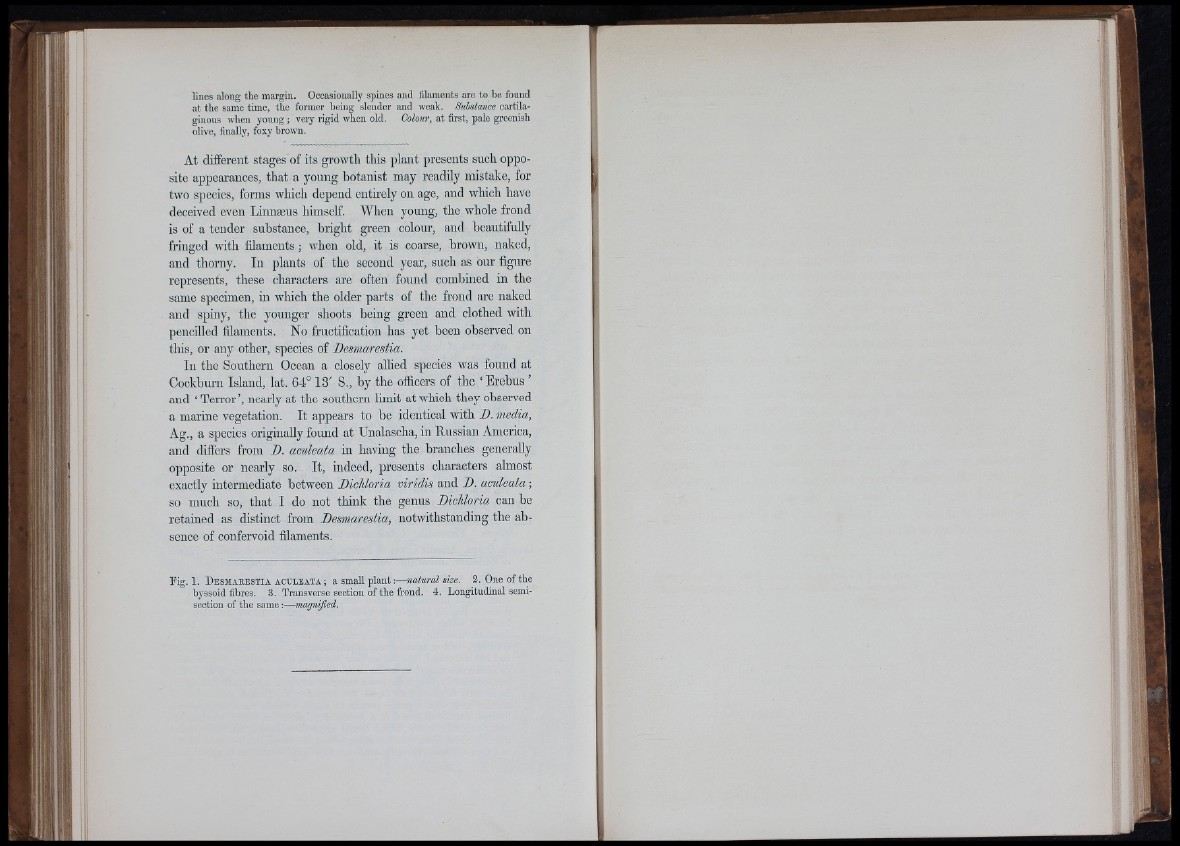
lines along the margin. Occasionally spines and filaments are to he found
at the same time, the former being slender and weak. Sithstance cartilaginous
when young ; very rigid when old. Colour, at first, pale greenish
olive, finally, foxy brown.
At different stages of its growth this plant presents such opposite
appearances, that a young botanist may readily mistake, for
two species, forms which depend entirely on age, and which have
deceived even Linnaeus himself. When young, the whole frond
is of a tender substance, bright green colour, and beautifully
fringed vdth filaments; when old, it is coarse, brown, naked,
and thorny. In plants of the second year, such as our figure
represents, these characters are often found combined in the
same specimen, in which the older parts of the frond are naked
and spiny, the younger shoots being green and clothed with
pencilled filaments. No fructification has yet been observed on
this, or any other, species of Desmarestia.
In the Southern Ocean a closely allied species was found at
Cockburn Island, lat. 64° 13' S., by the officers of the ‘Erebus ’
aud ‘ Terror’, nearly at the southern limit at which they observed
a marine vegetation. It appears to be identical with D. media,
Ag., a species originally found at Unalascha, in Russian America,
and differs from D. aculeata in having the branches generally
opposite or nearly so. It, indeed, presents characters almost
exactly intermediate between Dicliloria viridis and D. aculeata;
so much so, that I do not think the genus Dichloria can be
retained as distinct from Desmarestia, notwithstanding the absence
of confervoid filaments.
Fig. 1. D e sm a e e s t ia a c u l e a t a ; a small p la n t:— natural size. 3. One of the
byssoid fibres. 3. Transverse section of the frond. 4. Longitudinal semisection
of the same :— ma